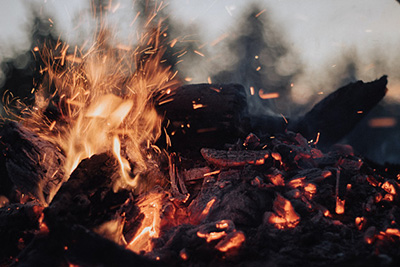
Ann Deer, Indigenous Recruitment & Support Coordinator for the Smith Commerce program and the Faculty of Law, shares her story and invites us to think about the importance of building community.
Think not forever of yourself, O Chiefs,
nor of your generation.
Think of continuing generations of our families,
think of our grandchildren
and of those yet unborn,
whose faces are coming from beneath the ground.
Words spoke by the Peacemaker founder of the Iroquois Confederacy, circa 1000 A.D. Wisdomkeepers, 1990
When asked what my job is? I say my title has recruitment and support in it. But what I do is build community for our young Indigenous leaders, expanding their minds here at Queen’s U.
In ceremony we learn about keeping the fire. It sounds pretty simple and straight forward. But in my opinion, this simple statement is the heart of what makes a community. I remember being young and hearing talk about moving the fire from one longhouse to another. I thought, well, that is simple enough, right? What they meant is we are moving our fire that came from the first council fire that continues to live and warm our space where council meet, and we gather to celebrate our ceremonies. Where we pray and offer our medicine.
This fire we must care for lives in our hearts and homes. It is where it begins. Men are the fire keepers, and women are the fire. When they create a family, and their child travels from the spirit world through the mother as she is the vessel of life, their home no longer has two souls to keep warm but three. Together they keep their home fire alive. This fire, love, togetherness and prayers extend out to our immediate extended family, friends, and community. When the fire is left to get cold in a person, one will no longer feel the warmth but instead a coldness, anger or grief.
When I first came to campus, I sought to find people who attend ceremony. We are few here in a concrete world of academia. I quickly realized that to recruit students and feel good about my work authentically, I needed to influence my surroundings to reflect my roots and other Indigenous peoples living here. I asked what I would need to commit to three or four years of study, relationship, and life in this community as a young person in my wondering and growing years. The answer is I would need community and people who understood this need by living it. A community outside of books and someone’s thesis. A community that helps one balance their life in two worlds. The Haudenosaunee canoe and the White Man’s Ship.
By cultivating relationships and building community together with my colleagues, we develop an inclusive curriculum, hold space and see visual representations of Indigenous culture across campus. In doing this work, we nurture safe spaces for our Indigenous students, BIPOC, 2SLGBTQI+ and Ally students to expand their minds side by side.
Today, my favorite title giving to me by my students is Auntie. These are my words.